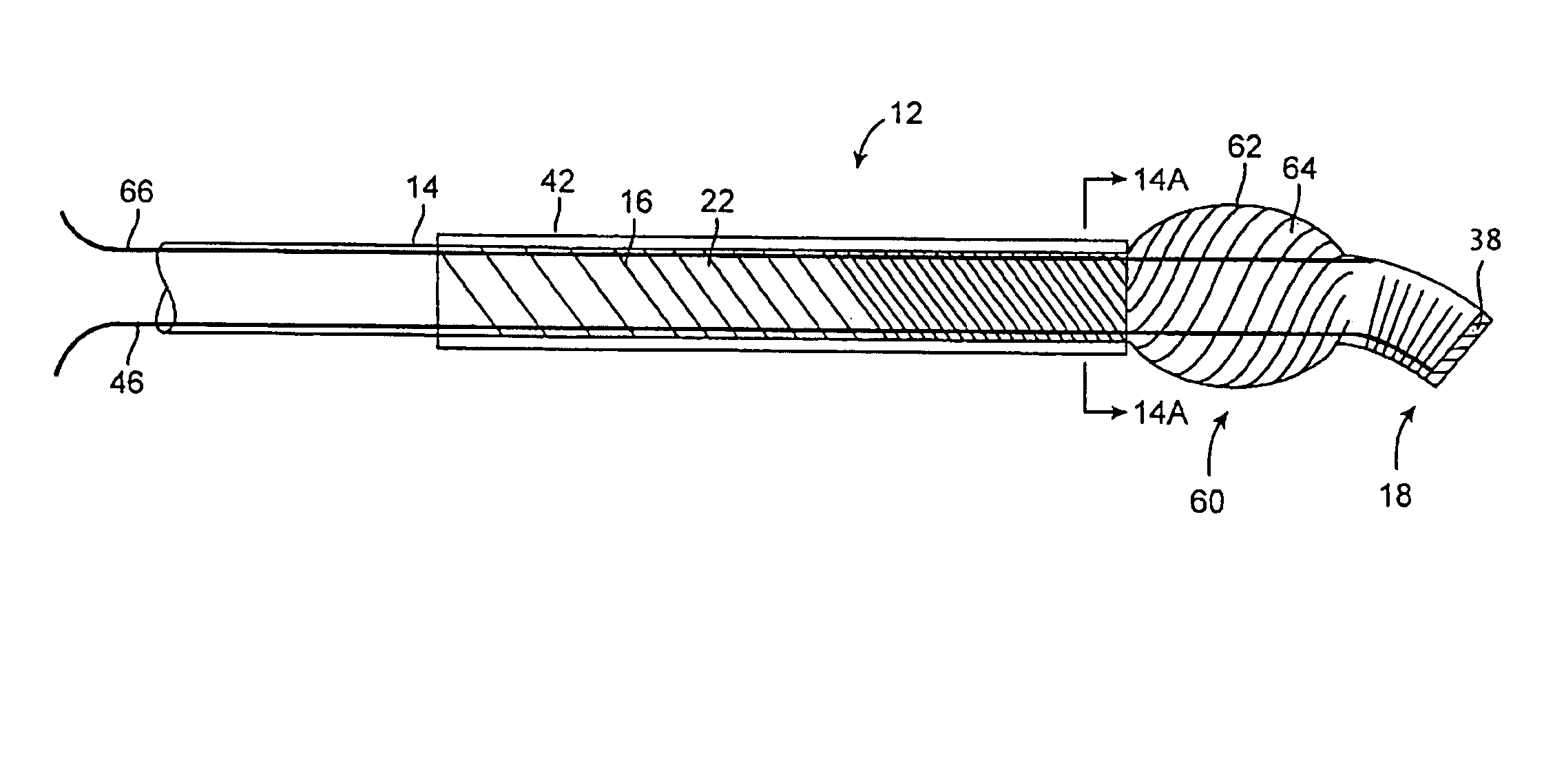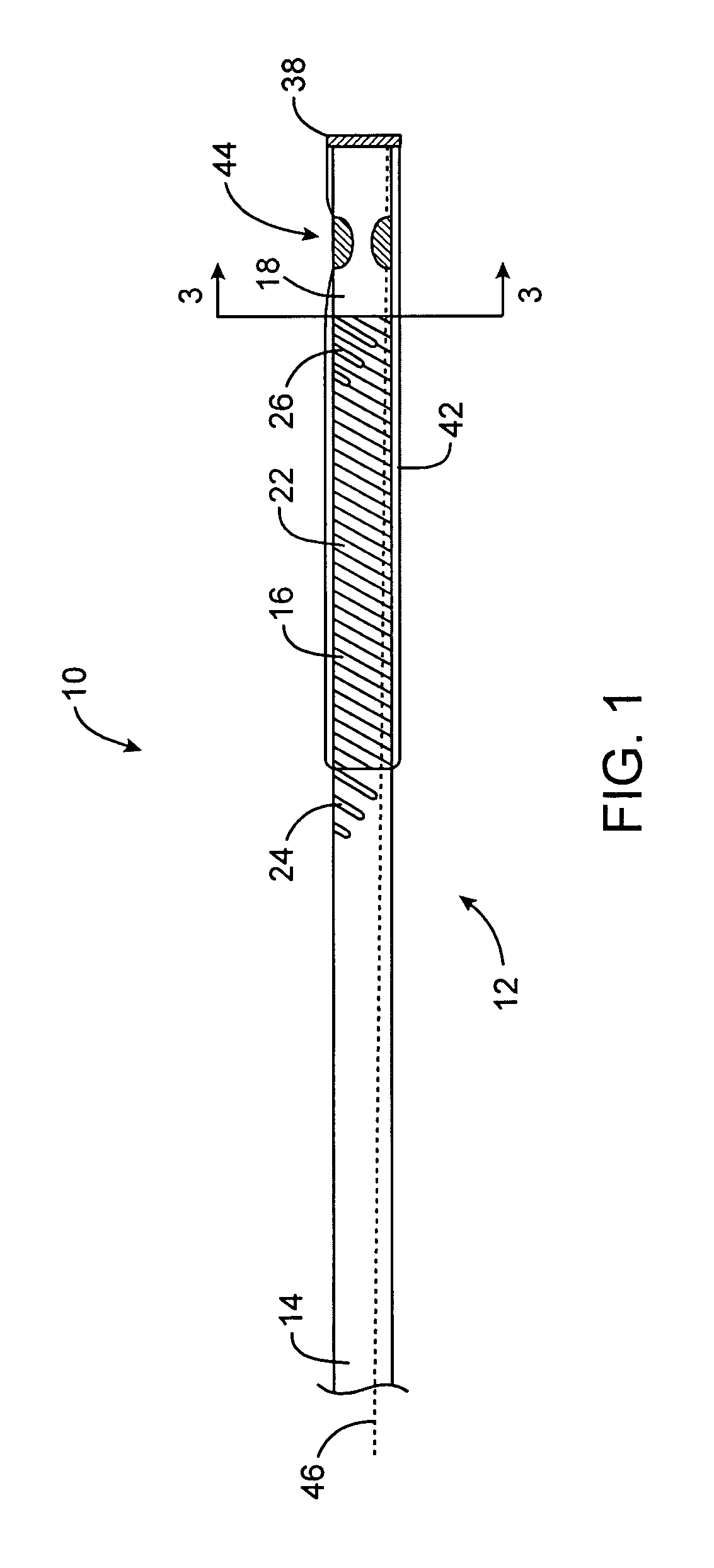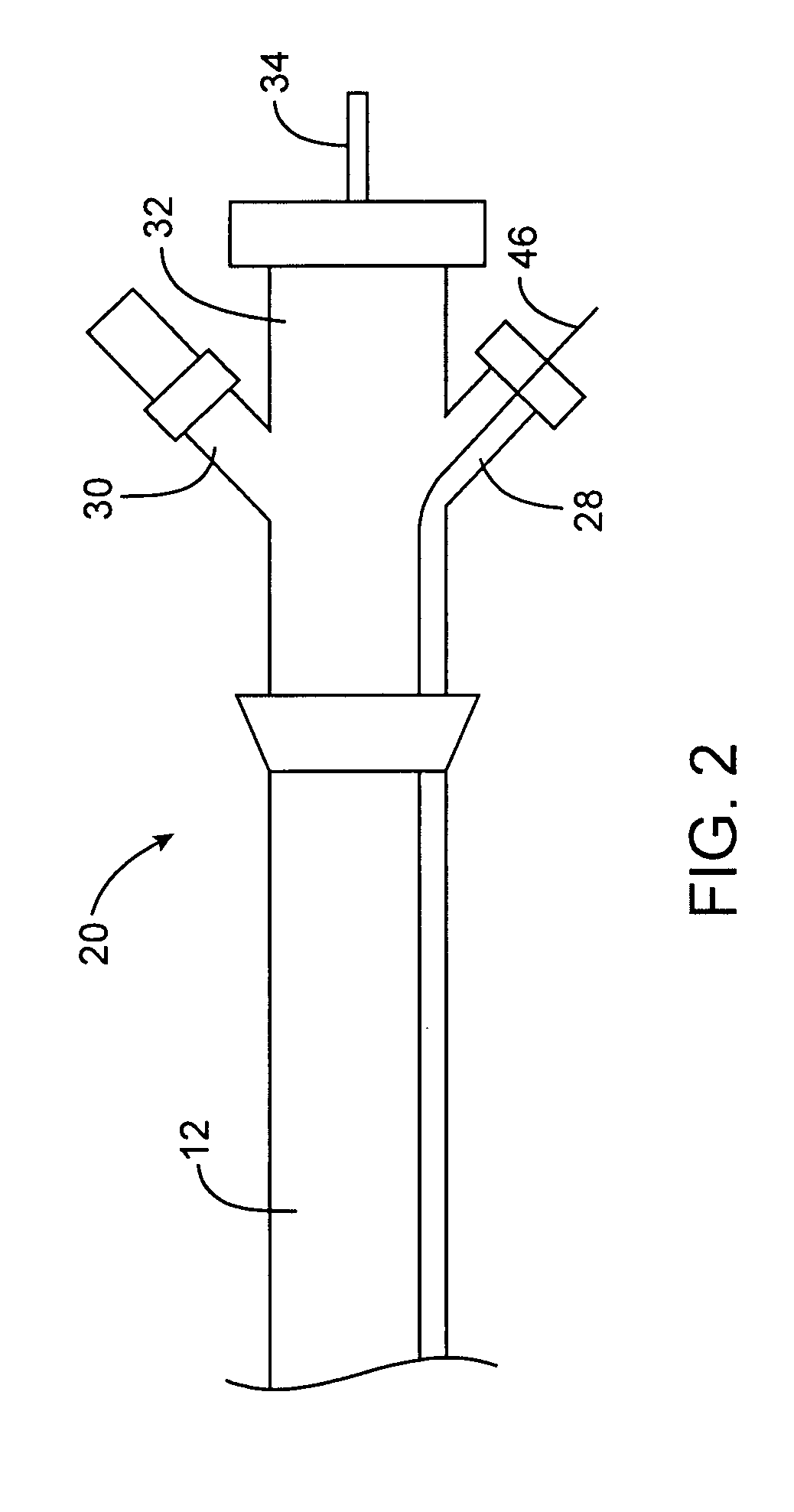Steerable distal support system
a technology of distal support and support rod, which is applied in the field of medical devices and methods, can solve the problems that many thin walled polymeric based catheters do not have sufficient maneuverability or torqueability to be advanced, and achieve the effects of sufficient torqueability and maneuverability, sufficient maneuverability or torqueability, and reduction of the size of the inner axial lumen
- Summary
- Abstract
- Description
- Claims
- Application Information
AI Technical Summary
Benefits of technology
Problems solved by technology
Method used
Image
Examples
Embodiment Construction
[0039]The present invention provides a steerable distal support system that is in the form of catheter or hollow guidewire so as to define a working channel for an interventional device. The steerable distal support system of the present invention is typically comprised of one or more tubular bodies such as hypotubes. At least some of the hypotubes may be selectively etched to create spiral etchings that have a varying pitch along the length of the steerable distal support system so as to create one or more flexible, soft atraumatic coils. By varying the pitch of the spiral coils, a user may selectively create stiff and flexible portions along the length of the steerable distal support system. As will be described in greater detail below, the steerable distal support system in FIG. 1 comprises three separate coils coupled to each other to form the elongate body of the steerable distal support system. In contrast, the embodiments of FIGS. 11 and 13 are comprised of a single laser etc...
PUM
 Login to View More
Login to View More Abstract
Description
Claims
Application Information
 Login to View More
Login to View More - R&D
- Intellectual Property
- Life Sciences
- Materials
- Tech Scout
- Unparalleled Data Quality
- Higher Quality Content
- 60% Fewer Hallucinations
Browse by: Latest US Patents, China's latest patents, Technical Efficacy Thesaurus, Application Domain, Technology Topic, Popular Technical Reports.
© 2025 PatSnap. All rights reserved.Legal|Privacy policy|Modern Slavery Act Transparency Statement|Sitemap|About US| Contact US: help@patsnap.com



